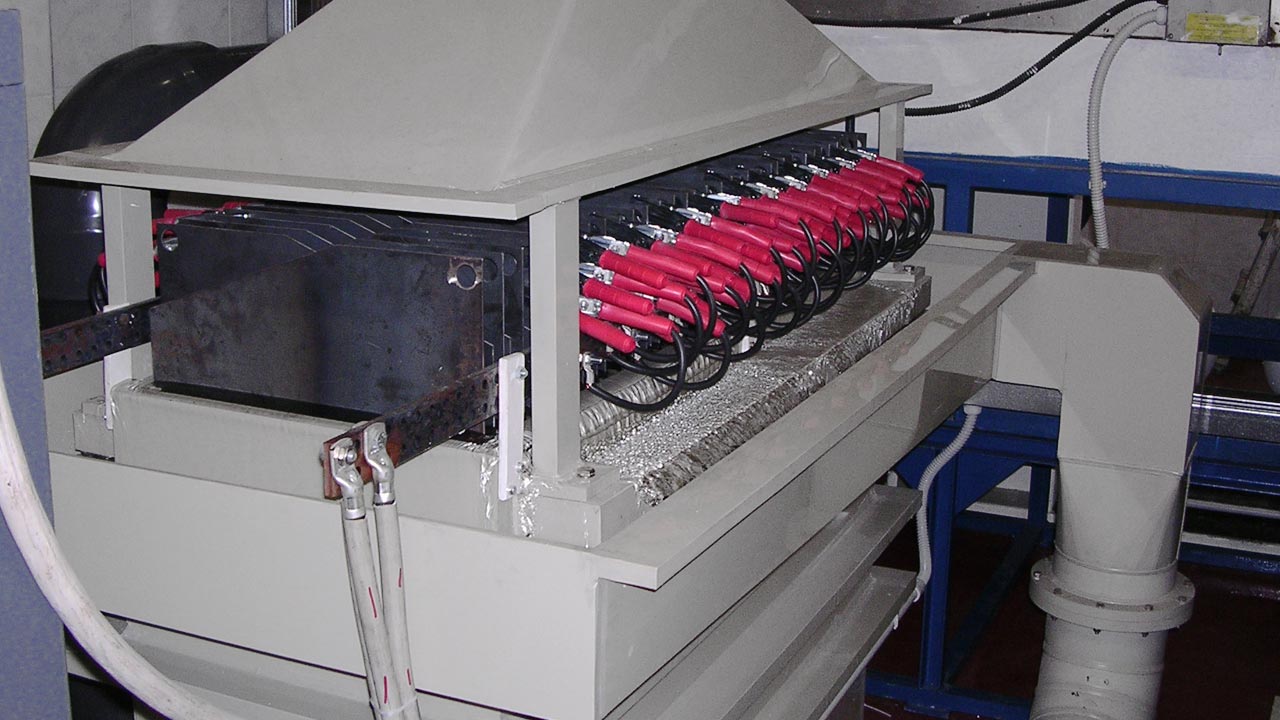
Electrochemical Reduction of Chromates
Hexavalent chromium, contained in high concentrations in wastewater from galvanic lines or found in industrial plants that use it in welding, plating and painting, is a toxic and carcinogenic element, as confirmed by the International Agency for Research on Cancer.
By means of an electrocoagulation facility, electrochemical chromate reduction can be activated, causing Chromium to change from hexavalent (Cr6+) to trivalent (Cr3+), nullifying its harmful potential. Trivalent chromium, in fact, is an essential ion for the metabolization of sugars by humans.

The electrochemical system takes place by means of electrodes immersed in water, which induce the process of electrolysis through the passage of electric current. This intervenes in chemical transformations by harnessing the potential of energy and causing a reduction of the element.
This type of activity also enables action on theoxidation of sulfides and the subsequent precipitation of heavy metals, which may be contained in the effluent.
Finally, a third area of focus concerns the removal of organic substances and surfactant molecules, which are often found in products from the Chemical-Pharmaceutical Sector.

